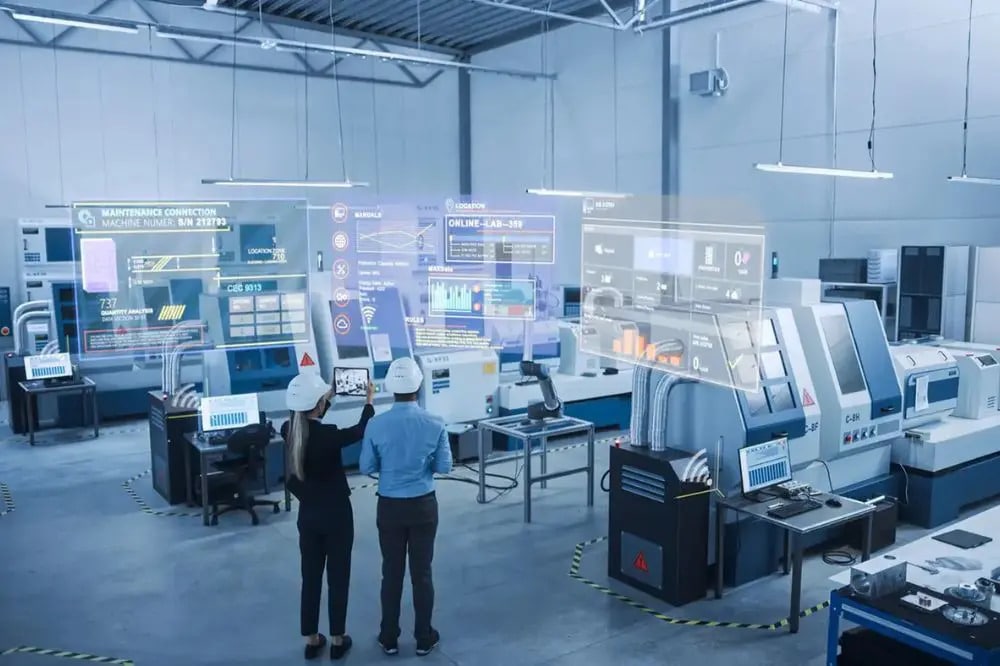As the Industrial Internet of Things (IIoT) gets more developed and mature, its use in the industrial sector is accelerating the industry's networking, digitalization, and intelligence at a never-before-seen rate.
The application of IIoT in machines and equipment mainly relies on the data obtained from sensing, connecting, and computing, and this article will discuss the key applications of IIoT in machines and equipment and the changes it brings.
Key Applications of Industrial Internet Of Things
Real-time Monitoring
This is one of the core functions of IIoT, providing instant feedback on equipment health by integrating sensors and controllers to continuously collect operational data and fault signals. This capability enables operators to detect anomalies in a timely manner and prevent production interruptions caused by equipment failure.
Remote Control Technology
This feature enables technicians to manage machines and equipment from any location, enabling them to initiate, halt, and modify parameters. This feature is critical when dealing with emergencies, remote commissioning, or cross-location management and significantly improves response time and flexibility.
Remote Management and Operation and Maintenance
Remote management goes beyond simple control operations to cover complex tasks such as equipment configuration, software upgrades, and troubleshooting. With the remote operation and maintenance platform, enterprises can centrally monitor the status of all equipment, quickly locate and resolve problems, reduce downtime, and improve operation and maintenance efficiency. In addition, the platform facilitates knowledge sharing and cross-regional collaboration for technical support.
Predictive Maintenance
Through the integration of big data analytics and machine learning technologies, predictive maintenance is able to accurately predict equipment failures and perform preventive maintenance before they occur. Compared with traditional maintenance methods, this approach significantly reduces maintenance costs, reduces unscheduled downtime, and improves equipment utilization and overall productivity.
Energy Consumption Monitoring
This technology helps enterprises track energy consumption in the production process in real time, identify high energy consumption links, and formulate energy-saving and emission reduction measures accordingly. By optimizing production processes and adjusting equipment parameters, companies can not only achieve the goal of energy savings and emission reduction but also effectively reduce costs.
Quality monitoring and process optimization
Combined with advanced sensor technology and machine vision, the quality monitoring system is able to detect the quality of products in real time and identify and correct production deviations in a timely manner. At the same time, through the in-depth analysis of production data, enterprises can continuously improve the production process, improve the consistency and stability of product quality to meet market demand.
Production efficiency monitoring and optimization
By collecting and analyzing a large amount of production data, enterprises can obtain information on key indicators such as Overall Equipment Effectiveness (OEE) to optimize production planning, resource allocation and production processes. The application of automation and intelligent tools reduces the need for manual intervention, improves production efficiency and flexibility, and realizes the goal of lean production.
Safety and Environment Monitoring
This is an important part of IIoT in factory management. By deploying various types of sensors, safety hazards (e.g., combustible gas concentration, smoke, location of personnel, etc.) and environmental conditions (e.g., noise level, dust content, temperature and humidity, etc.) in the work area can be monitored in real time, to ensure employee safety and compliance of the production environment with regulatory standards. Combined with an intelligent alarm system, it allows for a quick response in case of emergency and minimizes accidental damage.
Application Scenarios
- In-plant applications (intelligent manufacturing) cover real-time monitoring, predictive maintenance, energy consumption monitoring, quality monitoring and process optimization, productivity monitoring and optimization, as well as safety and environmental monitoring.
- Outside plant applications (intelligent operation and maintenance) mainly include real-time monitoring, remote control, remote management, and remote operation and maintenance.
Conclusion
IIoT technology is not only limited to the manufacturing industry, but also shows strong potential in a variety of fields such as buildings, energy, transportation, maritime, etc., driving various industries towards digitalization and intelligence.
With the continuous progress of technology, IIoT will play an even more important role in the future and become one of the key technologies to promote the sustainable development of the global economy.

